“I tried to design objects, things, furniture and have them built. I made them big and heavy with plinths and bases to take them away from the kitsch of bourgeois and petty-bourgeois furniture. They stand almost nowhere and anyway they don’t bind, they can’t produce coordinates. They just stand alone, like monuments in squares, and they can’t even style.” So wrote the great designer Ettore Sottsass (Innsbruck, 1917 - Milan, 2007), talking about his creations, and who knows if he was thinking the same things when he was designing Carlton, one of his most famous objects. It was 1981, and Sottsass had just founded the Memphis Group, a design and architecture collective whose name was apparently inspired by the song Stuck inside of mobile with the Memphis Blues Again by Bob Dylan, and formed initially, in addition to Sottsass, by Michele De Lucchi, Martine Bedin, Aldo Cibic, Matteo Thun, and Marco Zanini, who were later joined by other designers such as Ernesto Gismondi, Alessandro Mendini, Arata Isozaki, and several others. The Memphis group, whose thinking was rooted in the pop culture of the time, set out to create colorful, fun, out-of-the-box design objects: they pioneered the postmodern movement in design and produced a wide range of products characterized by simple geometric shapes, bright colors, and innovative materials. Innovative products to introduce color and poetry into everyday life through everyday objects. This was an experience of considerable importance to the history of design, because the group changed the way design was perceived and produced, paving the way for new forms of creativity and innovation in design and defining a new postmodern style that had a major impact on many designers and architects.
Carlton is certainly one of the most famous of the products that came out of the group’s ideas, as well as one of Ettore Sottsass’s most successful objects. Designed in 1981, Carlton is a bookcase that stands out for its combination of simple geometric shapes, bright colors and innovative materials. Its pure, solid and garish color block form has made Carlton a symbol of postmodern design. In addition, the combination of wood and plastic laminate (the latter produced by the Milan-based company Abet) resting on a base decorated with “Bacterio” laminate (a dotted pattern so named because the dots resemble moving bacteria) also made Carlton an example of the use of modern materials in design. The material, for Carlton, also had a symbolic meaning, since plastic laminate was considered good for inexpensive products: instead, Sottsass wanted to show that it is possible to create fine design objects even with consumable materials.
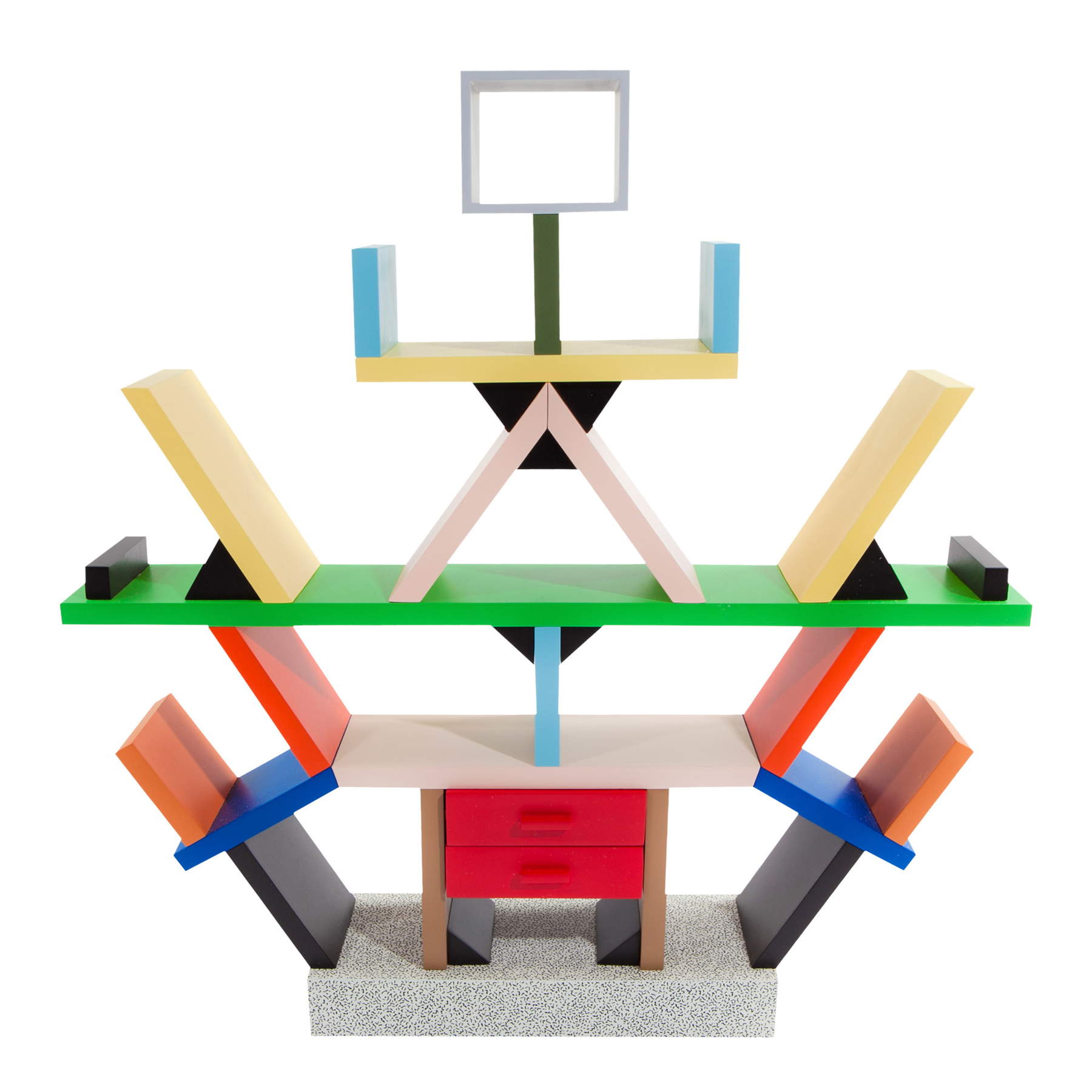

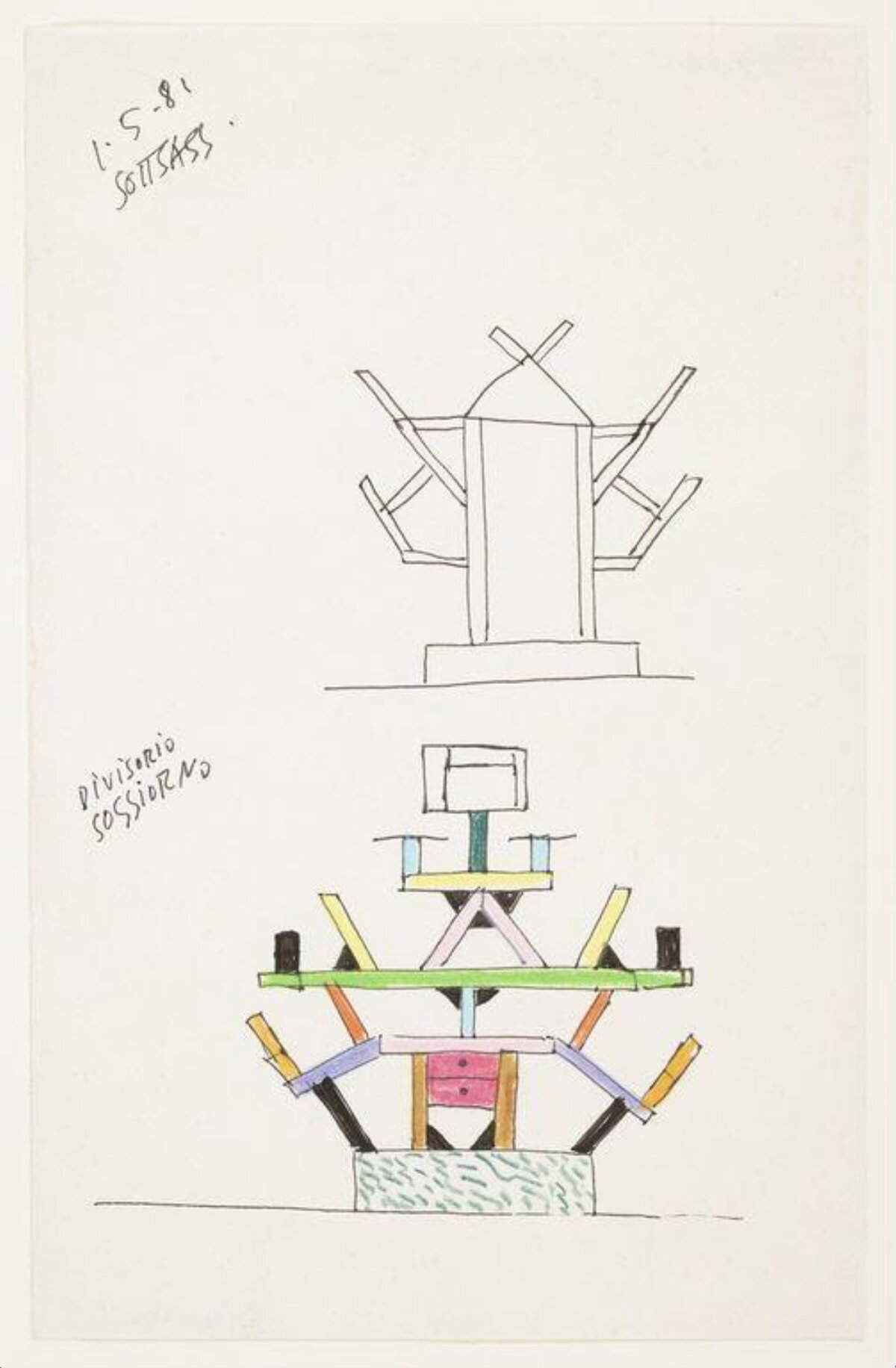
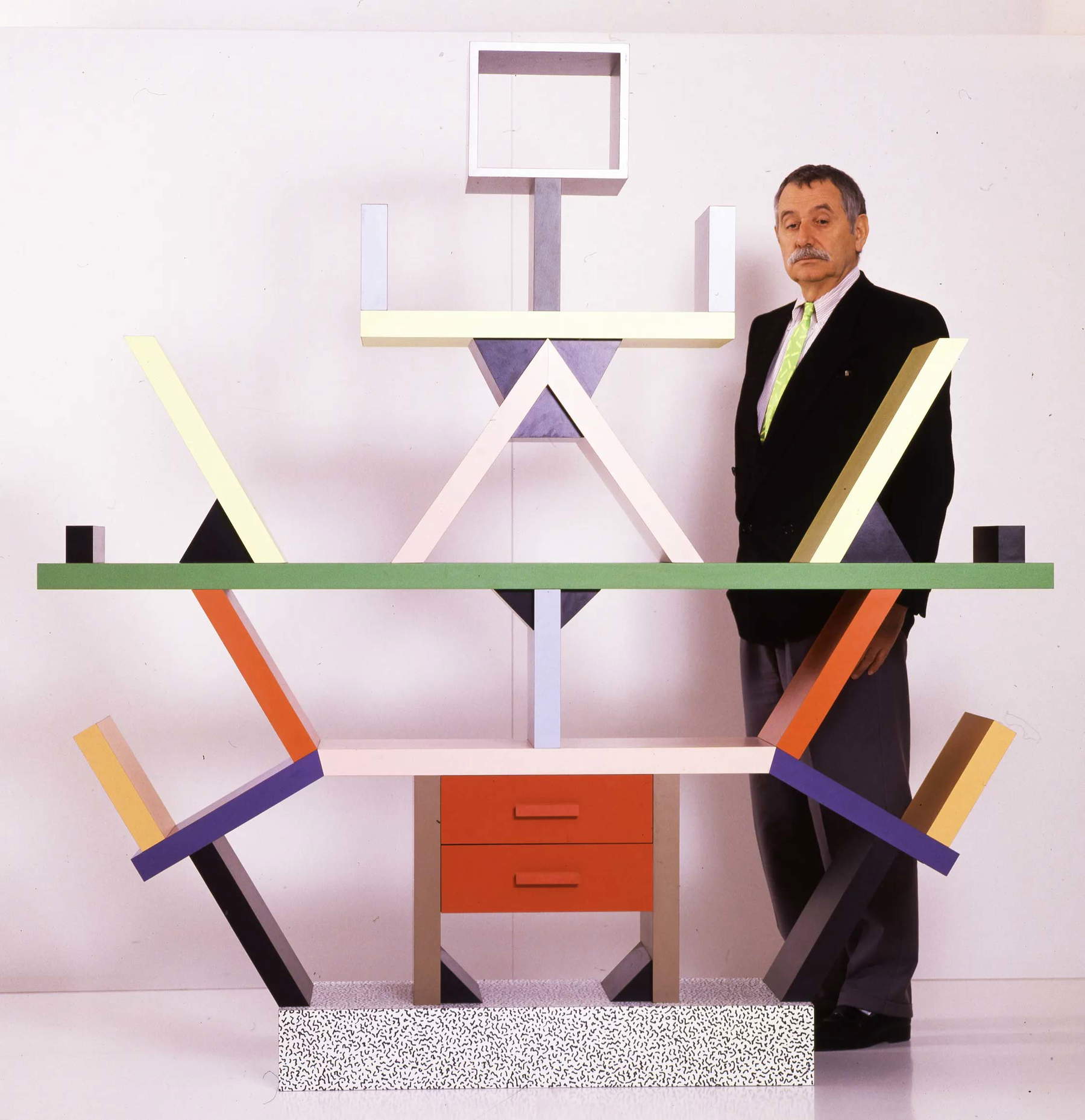
Carlton was presented at the 1981 Salone del Mobile in Milan and was successful (but also criticized) because of these features as well as its anthropomorphic form, but which may also resemble that of a totem pole. According to designer Francesco Trabucco, Sottsass’s bookcase is an example of “innovation of meaning”: seemingly trivial, it is actually a highly innovative object, capable of conveying “a completely new image,” Trabucco writes, "disruptive with respect to the déjà vu of modernism now taken for granted. An image destined to mark a certain way of doing Italian design for years, crossing all the modern art galleries and museums of the world, all the magazines and design chronicles for years, certainly much more than it inhabited the homes of eager users of a bookcase."
Sottsass’s bookcase was enthusiastically received by designers, although it cannot be said to be a “popular” object: bulky (it is almost two meters high, just as wide, and weighs 120 kilograms, so much so that it can also be used as a room divider), expensive, unconventional, and even produced in a few examples, it nevertheless had a wide fame due mainly to the fact that it stood as an excellent example of postmodern design and as an unmistakable manifesto of the poetics of Ettore Sottsass and the entire Memphis movement. Carlton demonstrated that a design object did not necessarily have to be serious and complex to fulfill its role: a design piece can also have playful shapes, be made of inexpensive materials, and yet become recognizable and bring added value into the homes of those who buy it.
Among the admirers of Ettore Sottsass and the Memphis Group was David Bowie, who kept a Carlton bookcase in his home, which was auctioned off in late 2016, a few months after his death, during the third part of a sale titled Bowie/Collector along with several other items belonging to the glam star. It was on that very occasion that it was discovered that Bowie was a fan of the Milanese group’s creations, as well as an avid collector, able to put together, with taste and passion, a collection of more than a hundred Memphis pieces that began in the 1990s. Another great lover of Memphis’s creations was fashion designer Karl Lagerfeld: his passion for the objects of Sottsass and colleagues began as early as the 1980s, and there are photographs, dating from that time, of him in his Monte-Carlo apartment along with objects produced by Memphis, including the ever-present Carlton. And a Carlton bookcase figures prominently in the back wall of the living room of Cara Delevingne’s London apartment
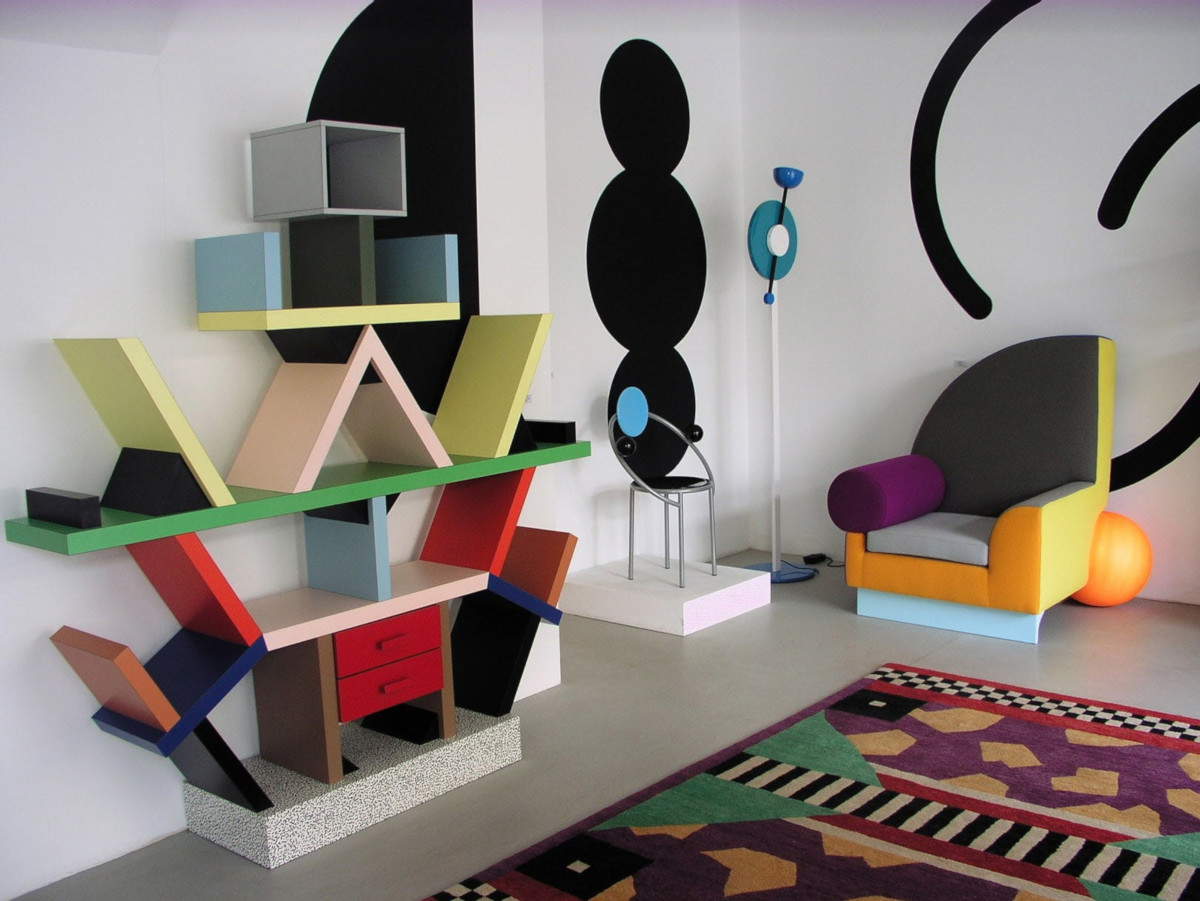
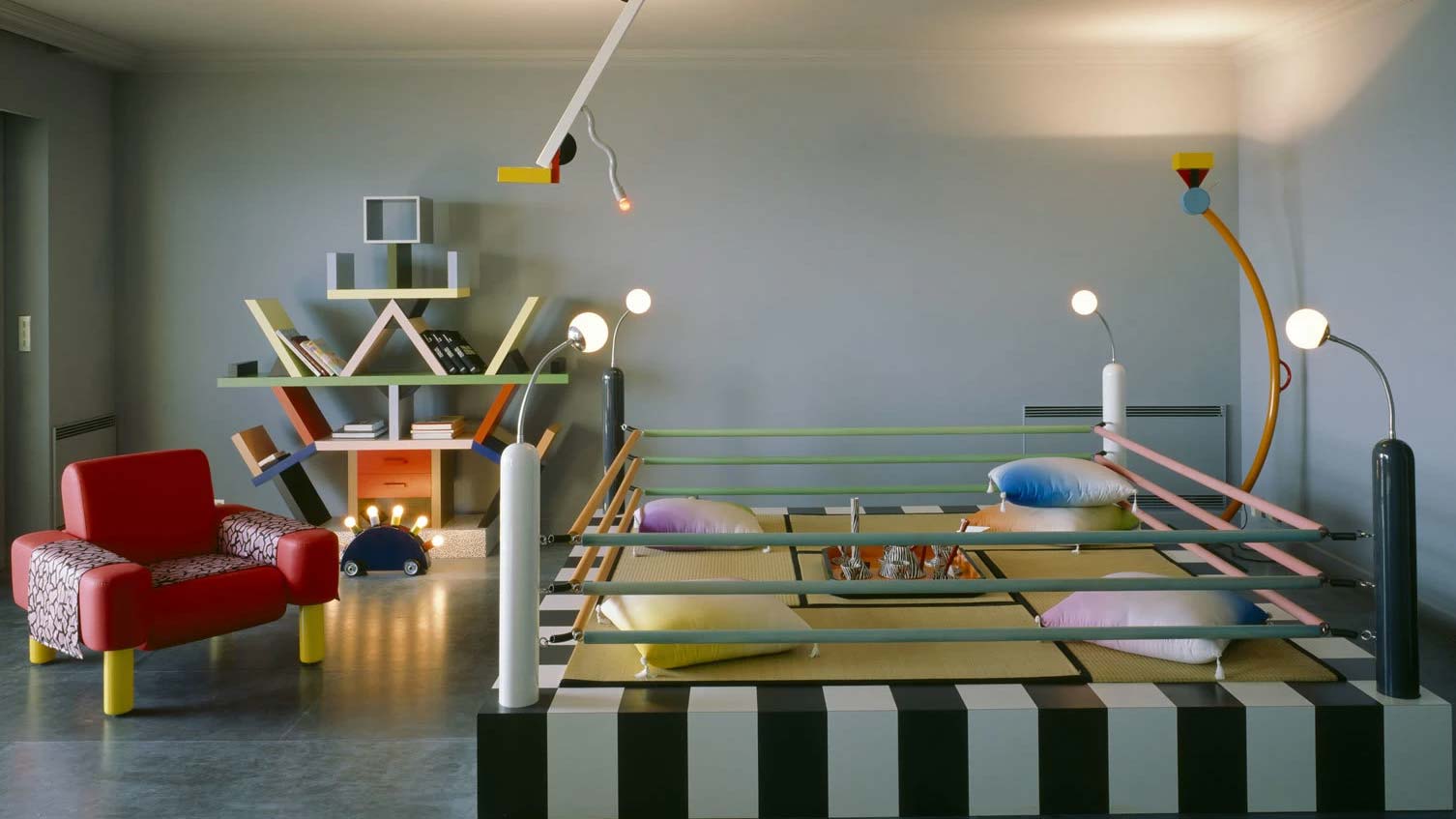
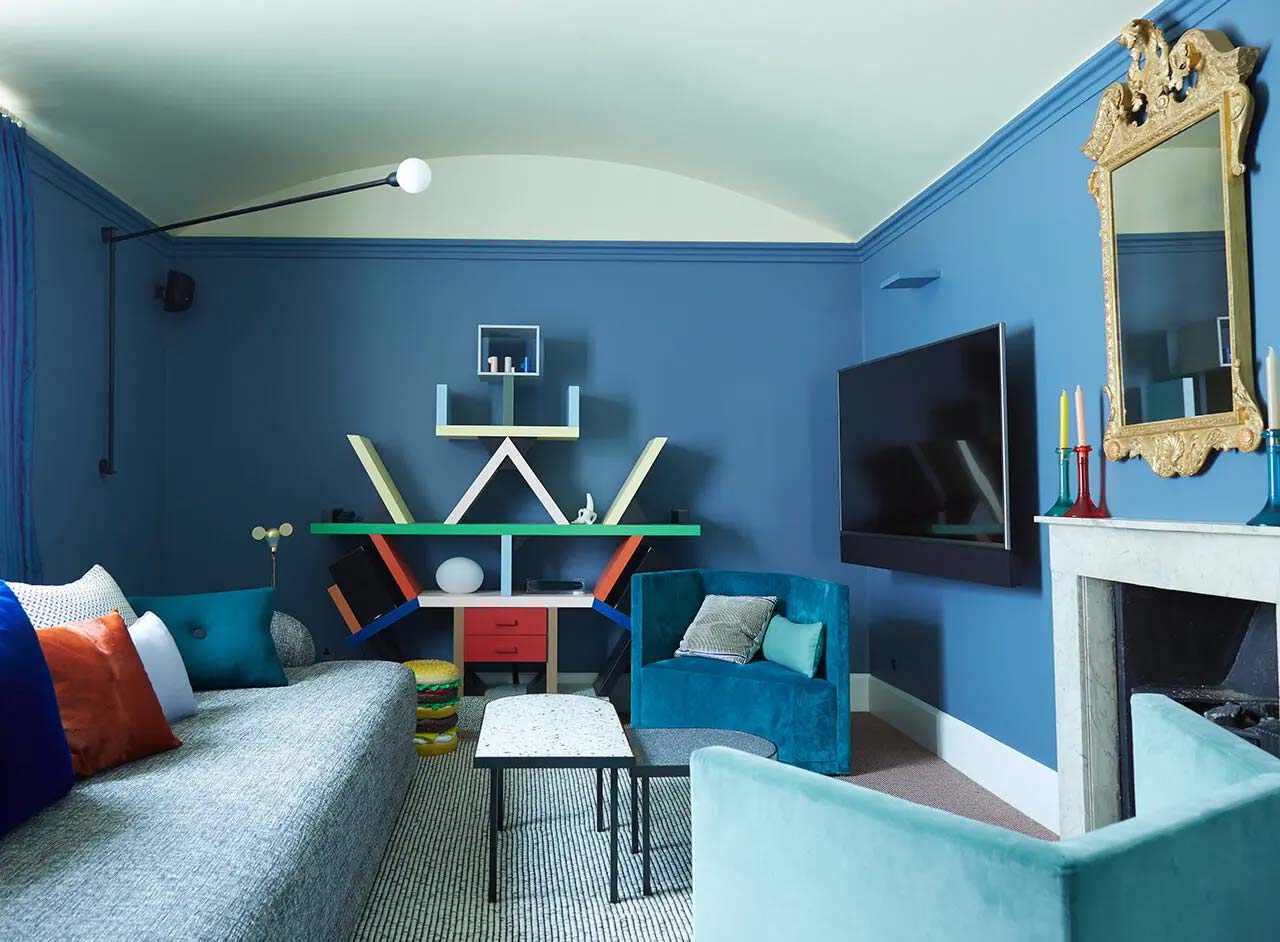
Although the Memphis group’s experience ended in 1987, their objects are still produced, by Memphis srl, the company that produces the historical pieces following the dictates of the designers who designed them (and consequently can be considered original). It has been said that Carlton is an expensive object: it is in fact sold for 15,600 euros, and for the 30th anniversary, in 2011, a version with a 24-karat gold-plated silver label and a special case was also produced, but there is also a miniature version (a quarter of Carlton’s size) sold for just over a thousand euros.
Because of its history and what Carlton has meant, it has also entered the collections of several museums, including the Metropolitan in New York, which describes it in its fact sheet as a “totemic room divider,” an “icon of the Memphis group” that “challenges conventional furniture forms by combining a room divider, bookcase, and chest of drawers.” Intended for the “highest end of the market and finely handcrafted,” it is made with “vibrant colors and according to a seemingly random interplay of solids and voids that suggest avant-garde painting and sculpture,” despite being built according to an “entirely logical structural system of real and implied equilateral triangles.” For the New York museum, Carlton can be read in a variety of ways: a robot greeting us with open arms, a Hindu goddess, or even a man exulting above a chaos that he himself helped create. It is true, then, that Carlton is an object not within the reach of all pockets. But the idea it has conveyed has helped make design more popular and accessible. And to reintroduce creativity at a time in history when functionality had taken over.
Warning: the translation into English of the original Italian article was created using automatic tools. We undertake to review all articles, but we do not guarantee the total absence of inaccuracies in the translation due to the program. You can find the original by clicking on the ITA button. If you find any mistake,please contact us.